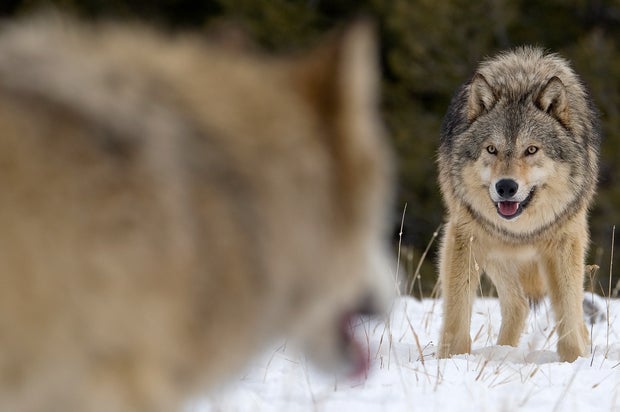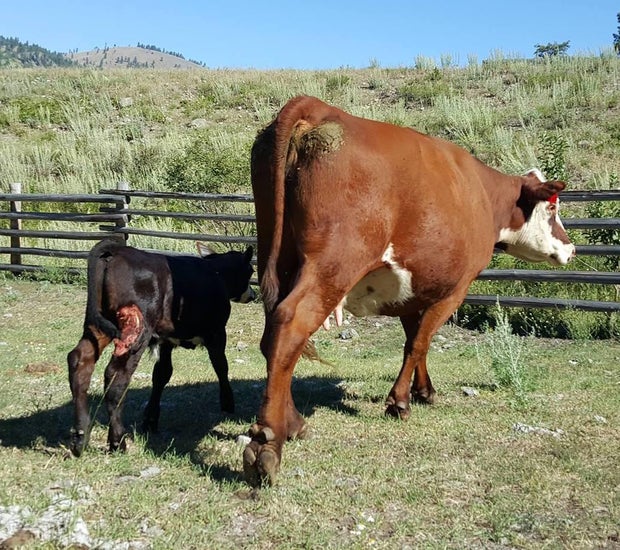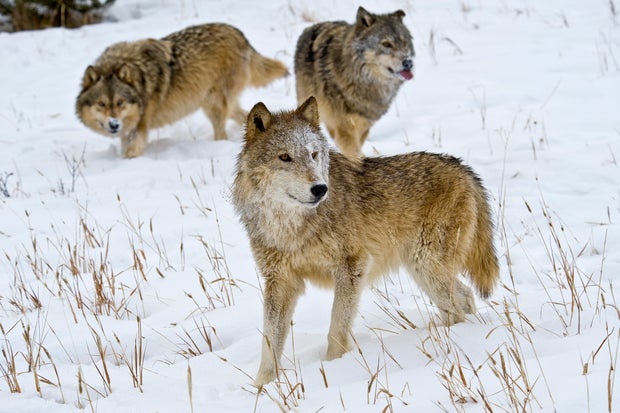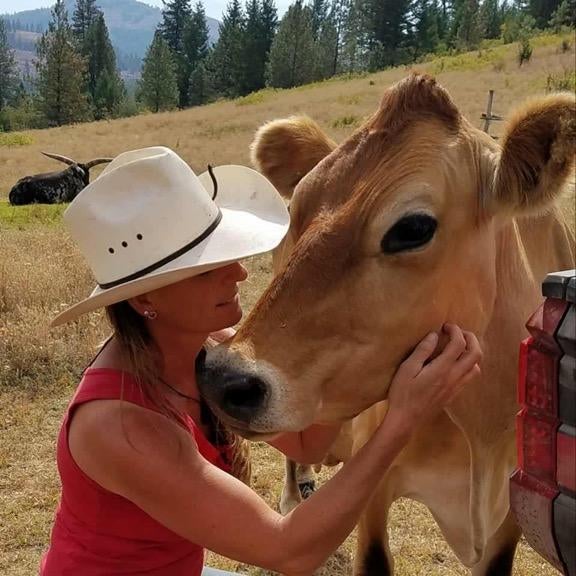When Francine Madden heard about a man from Wyoming who killed a gray wolf after injuring it with his snowmobile and when she showed it to him at his local bar, she was shocked, but not terribly surprised.
She has seen a lot in her nearly three decades of work as a wildlife conflict mediator, resolving disputes over gorillas in Uganda and tigers in Bhutan, but for 50 years, gray wolf management has been a persistent American problem.
Dennis Fast / VWPics/Universal Images Group via Getty Images
Since 1973, the gray wolf has been on and off the federal endangered species list. When wolves are listed, advocates say the protections help keep wolves in their natural habitat and allow them to roam the American West as they have for hundreds of years — and not, as some say, be treated “like pests.” On the other hand, some ranchers say there are too many wolves and they have to bear the economic — and emotional — cost of lost livestock.
“I see my animals dying and being killed,” Kathy McKay, owner of the 4,000-acre K-Diamond-K ranch in Washington state, told CBS News. She says she can’t sleep at night for fear of her animals’ lives, and she has lost about 40 of them to wolves.
When wolves are removed from the endangered species list, as is now the case in some states in the lower 48, advocates say wolves are being killed indiscriminately. Attorney and advocate Collette Adkins, director of carnivore conservation at the Center for Biological Diversity, said wolf carcasses “pile up” and there’s a “cowboy mentality” surrounding a species often not seen as worthy.
K-Diamond-K guest ranch
Meet Madden. In December, she was hired by the federal government as a mediator. This is her second time wading into the swamp, albeit on a much larger scale. In 2015, she facilitated the 18-member Washington state task force on gray wolves, helping to make some policy decisions on population management.
Nearly a decade later, she and her firm Constructive Conflict are back, this time on a national level. But in some ways, the parties have become more entrenched. Madden says she’s speaking to Americans who “feel like their way of life, or what they care about, is under very real threat.” Still, she remains confident that by 2025, she’ll have all sides at the table.
Parties drawn along party lines
Thousands of gray wolves roamed the American wilderness for centuries, until hunters, ranchers, and others nearly decimated the species. In 1973, the federal government listed them as endangered in the lower 48 states. According to the International Wolf Center, fewer than 1,000 wolves roamed the U.S. at the time.
Protected from hunting, gray wolves began to spread and some people became concerned that they were killing livestock and threatening tribal communities and land. Opposition soon began.
Dennis Fast / VWPics/Universal Images Group via Getty Images
Animals were killed, businesses were closed, and the parties—often drawn along party lines—dug in, convinced they had the right approach to managing gray wolves. For many, “wolves became a symbol of government interference,” Adkins said. Recent actions have been even more divisive; as populations rebounded, the gray wolf was removed from the federal endangered species list in 2020 and management shifted to the states.
Wolves began to die. For example, a third of Wisconsin’s gray wolf population was killed by hunters and poachers when protections were lifted, University of Wisconsin researchers found in 2021.
Michigan Technological University professor John Vucetich, along with more than 100 other scientists, wrote a letter to the Biden administration calling for the protections to be reinstated. Lawsuits were filed, and on February 10, 2022, gray wolves in the lower 48 states—with the exception of the Northern Rocky Mountain population—were reinstated by court order.
The news was shocking to McKay, who was born on the ranch her parents bought in 1961.
“I don’t understand how people 300 miles away have so much control over our livelihood and the survival of our livestock,” McKay said. “Why do we even have to ask?”
K-Diamond-K guest ranch
Different points of view, constant division
Members of the Washington state task force were unable to advance any policies in the years before Madden’s arrival, she said, and they “couldn’t talk to each other in a civil or constructive way.”
“The costs of the conflict over wolves are staggering,” she said, adding that no agency has really been able to calculate the damage, the economic costs – or the social costs – of the conflict.
““We didn’t feel comfortable being in the same room, with such different points of view. Ranchers were carrying all the burden, and there were environmentalists who we felt had no interest in it,” said Washington rancher Molly Linville, a member of the task force whose husband’s family has farmed 6,000 acres of land for more than 100 years.
In the year after Madden began mediating the local conflict, “they were able to come to a decision that they all agreed on,” she said. At the end of a three-year, $1.2 million state contract, she said, the task force hammered out a series of constructive policies to manage wolves in their state.
Madden brings the same optimism to the national dialogue.
She is nearing the end of the first year of a three-year, $3 million contract. Her group has contracted three companies to work on the project; one, a film company, will document the conversations about gray wolves and share the film with the public. Her group has already begun selecting the two dozen or so participants who will lead ongoing conversations about how to come together around gray wolves.
She traveled to Montana in June to meet with ranchers, reservations, and tribes. Over the past year, she’s met with people from Wisconsin, Montana, California, Idaho, New Hampshire, North Carolina, Colorado, Maryland, Pennsylvania and Indiana. Madden acknowledges that there’s “skepticism” when she tells people about her group’s approach to the conflict, but says many are open to talking because they feel the “current cycle of conflict in this country is hurting both people and wolves.”
She still believes in the power of Americans to listen to each other.
“There is a genuine hope that we can come together at a national level, in this deeply divided society, to have this conversation and move in the right direction for the long-term viability of communities, cultures and conservation,” Madden said.









